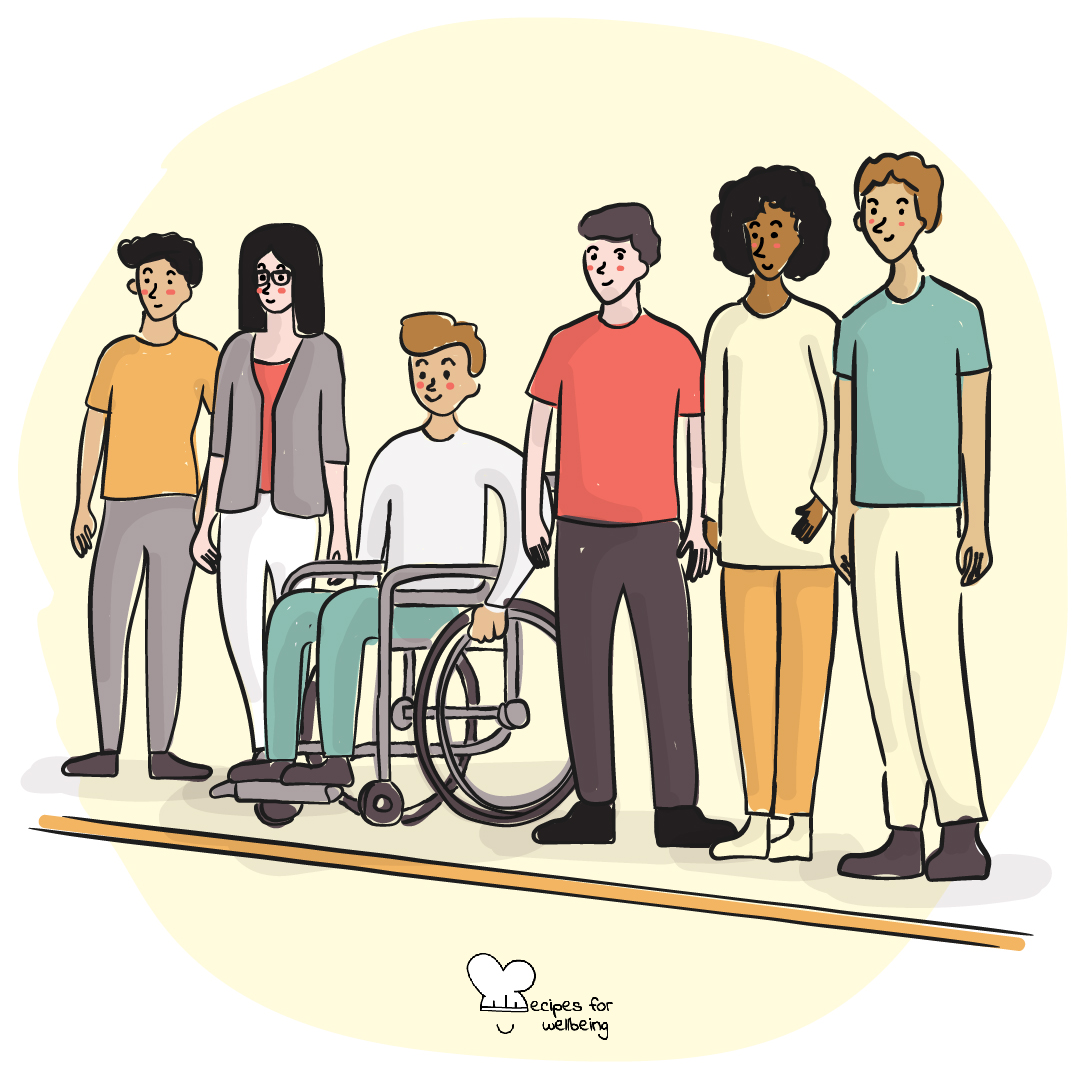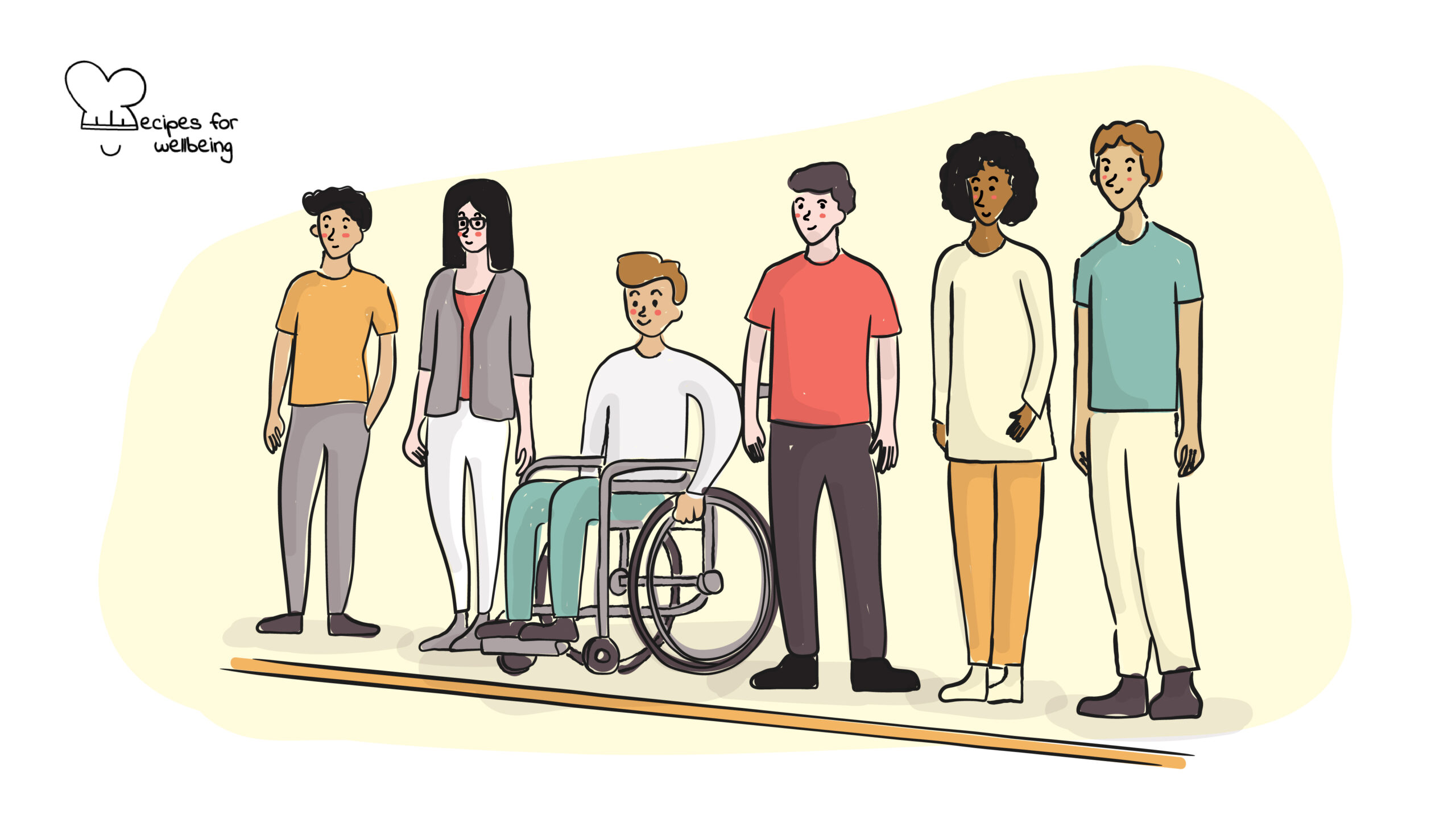
Crossing the line
Love and compassion are necessities, not luxuries. Without them, humanity cannot survive ―His Holiness the Dalai Lama
👥 Serves: 11-25 people, 26-40 people
🎚 Difficulty: Hard
⏳ Total time: 61-120 minutes
🥣 Ingredients: A group of friends, open space, respect, listening, trust
🤓 Wholebeing Domains: Community, Discomfortability, Liberatory Learning, Radical Care
💪 Wholebeing Skills: Authenticity, Compassion, Diversity, Empathy, Holding space, Honesty, Liberation, Relating to Others, Trust, Vulnera-bravery

Crossing the line
📝 Description
A deep activity to build diversity awareness within a group.
Crossing the line helps you learn about yourself by reflecting upon your own cultural identity. It also invites you to appreciate the diversity of the group by fostering empathy. This activity requires thorough facilitation and it should not be conducted carelessly or lightly. You need plenty of open space and you need to make sure the group will not be disturbed for the duration of the activity. You will be sharing experiences and vulnerabilities with one another, so it is important that everyone contributes to creating a safe space by showing respect and by listening to others.
After participants have formed a horizontal line on one side of the room, the facilitator starts calling out a series of categories and labels and invites those who fit each description to walk to the other side of the room and turn around, facing the rest of the group. After a few seconds, the facilitator asks those who have crossed to return to the other side with the rest of the group. It is important to note that this part of the activity does not unveil multi-layered stories, but increasing depth can be achieved during the group debrief. As a facilitator, speak clearly. Do not rush the process. Allow time for reflection. Do not read the next statement too soon.
👣 Steps
Step 1 – Guidelines (10’)
If you are the facilitator, take a few minutes to explain to the group the purpose of the exercise (you can use the text in the description above) as well as the essential guidelines.
- The first one is listening – the activity is done in complete silence (no talking or giggling). Silence will allow everyone to participate fully.
- The second one is respect – everything shared is confidential.
- The third one is that nobody should feel under pressure to respond in any particular way to any of the questions. If they have doubts about sharing some part of themselves, they should feel comfortable not to walk across the room.
- And fourth, each of these questions will have some grey areas so it is up to each participant to define the words from their own point of view and life experience.
Reassure participants that if at any point they feel uncomfortable, it is okay to step out.
Step 2 – Practice test (1’)
Run a simple practice test to make sure everyone understands the guidelines, e.g. cross to the other side of the room if you wear glasses or contact lenses. If everyone is ready, remind them that once you begin, there will be no interruptions. Agree on a non-verbal sign with hands for participants to ask you to repeat the statement.
Step 3 – Questions (35’)
Here is a list of suggested questions you may want to ask, but feel free to add or change them as appropriate for your group:
- Cross to the other side of the room if you are not from ________.
- Cross to the other side of the room if you feel your home is ________.
Remind people about greyness. It does not matter what the legal meaning of “home” is, but rather what each participant understands as “home”.
- Cross to the other side of the room if you identify as male.
- Cross to the other side of the room if you identify as female.
- Cross to the other side of the room if you identify as non-binary.
Reminder: no talking…
- Cross to the other side of the room if in the past year you have been in a relationship and been hurt.
- Cross to the other side of the room if you feel that you have not formed a close relationship in your organisation.
- …You are Christian.
- …You are Jewish.
- …You are Muslim.
- …You are Hindu.
- …You are Buddhist.
- …You are another religion other than those mentioned a moment ago.
- …You are atheist or agnostic.
- …You are a person of colour.
- …You know little about your cultural heritage.
- …You wish you had more money.
- …You consider your family as working class.
- …You consider your family as middle class.
- …You consider your family as upper class.
- …You have felt embarrassed about the economic class your family is in.
Reminder: Walk across the room only when you feel comfortable identifying yourself in this way.
- …You come from a family of four or more children.
- …You are an only child.
- …Cross to the other side if you feel like an adult.
- …You live independently of your parents.
- …You have taken primary responsibility either for raising another member of your family or caring for an elderly member of your family.
- …You have low self-esteem.
- …You would like to lose 5 or more kilograms.
- …You feel lonely.
- …You have been to university or plan to go to university.
- …You have not graduated from high school.
- …You feel physically unattractive.
- …You have ever been discriminated against.
- …You consider yourself a feminist.
- …Your parents have either divorced, separated, or never married.
- …At least one of your parents have died.
- …You feel estranged or unconnected.
- …There have been timed you have seriously felt that, if you could choose, you would not choose.
- …You find yourself thinking about food considerably more often than you want.
- …You have a medical problem.
- …You have a learning disability.
- …You have a physical disability.
- …You have questioned your sexual orientation.
- …You have experienced the effects of alcoholism in your family.
- …You have experienced the effects of drug addiction in your family.
- …You have had a sexual experience that you regretted.
- …You have experienced suicidal thoughts at some point in your life.
- …You have cried at least once this year.
- …You have cried at least once this year for someone or something other than yourself.
- Cross to the other side of the room if you could use a hug right now.
Step 4 – Debrief (40’)
After giving people a few minutes to realise what they just experienced, remind them of the guidelines that will also be essential in the reflection. Then invite people to share their answers to these two main questions:
- How are you feeling right now?
- Is there anything you want to say to the others in the group about why you crossed (or didn’t cross) to the other side of the room for a particular question?
A couple of warnings:
- If people start making comments about the merits of the workshop, kindly thank them for their contribution and refocus the conversation around people’s feelings and stories.
- If people start making comments about others, gently steer the conversation about talking from an “I” perspective rather than “You”.
Step 5 – Closing (5’)
Close the activity by thanking everyone for participating and sharing. Most importantly, thank them for showing up for who they are. Now give them plenty of free time for each of them to attend to their needs.

